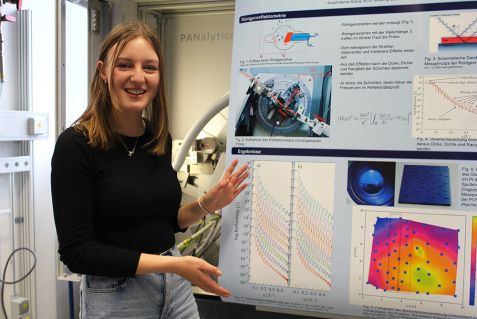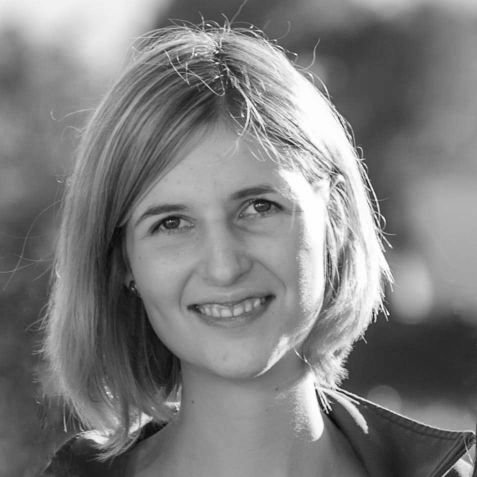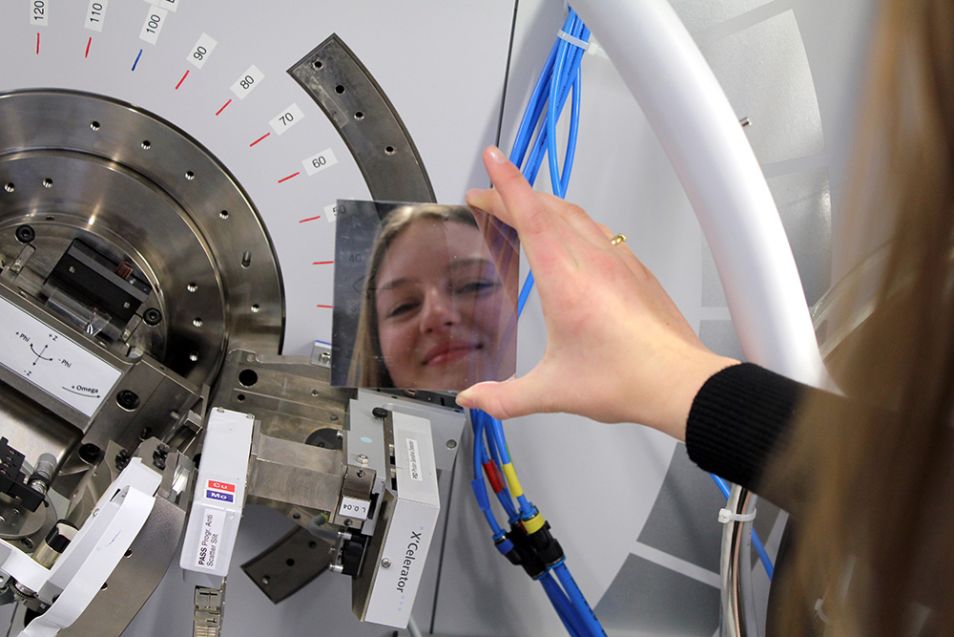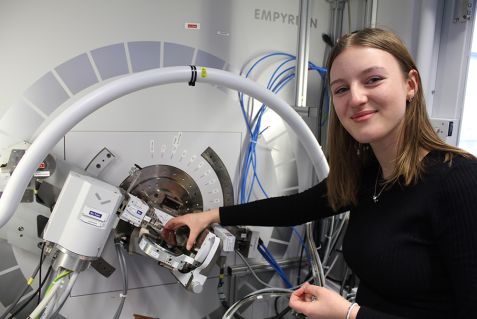MLZ is a cooperation between:
 > Technische Universität München
> Technische Universität München > Helmholtz-Zentrum Hereon
> Helmholtz-Zentrum Hereon
 > Forschungszentrum Jülich
> Forschungszentrum Jülich
MLZ is a member of:
 > LENS
> LENS > ERF-AISBL
> ERF-AISBL
MLZ on social media:

MLZ (eng)
Lichtenbergstr.1
85748 Garching
How thick is actually thin?
What is meant by thin layers? How are they measured? And what role do they play in science? These are the questions that 15-year-old Nea Pfaffermayr from Ismaning dealt with as an intern in the physics laboratory of FRM II – and obtained results that have real benefits for science.
Nea Pfaffermayr feels a little excited as she stands at the gate to the Research Neutron Source Heinz Maier-Leibnitz (FRM II) in the center of the research campus in Garching on the first day of her internship. The tenth-grader from Ismaning does not yet know exactly what to expect from the next two weeks as a laboratory intern. But one thing is clear: it will definitely be exciting. She has already had the opportunity to take a look behind the fence surrounding the FRM II research site once, as part of the Mädchen-Machen-Technik program at the Technical University of Munich. That was four years ago. Since then, she has been fascinated by research which is the reason for her internship at FRM II.
No clichés in the physics lab
Physicist Dr. Alexander Book, who supervises Nea during the internship, picks her up at the gate and leads her past the famous “Atomic Egg” directly into the physics lab at MLZ. “It’s not what you might imagine, with lots of little jars and liquids” is how Nea describes her first impression, setting the stereotypes straight. In fact, there are many monitors and analytical devices in the well organized room. Nea will later work on one of the largest.
Project with real scientific benefits
Befor all of that, she receives an introduction to her internship project from Alexander Book, an expert in X-rays: Nea is to produce a thin platinum layer and then measure it. “We want to test how well our coating system works,” Book explains. Nea’s project thus has a real scientific benefit, because the coating system in the physics lab is unique worldwide and is a sought-after piece of equipment in research due to its compact and special design, which allows it to be set up in a neutron beamline. This means that the system can even be used to coat samples during a neutron measurement, which is very interesting in studies of magnetism, for example.
Tongue twisters and patience
First, Nea coats a ten-by-ten-centimeter glass plate with a very thin layer of platinum using the coating machine – physicists also refer to this process as sputtering. Afterwards, she is working on the X-ray reflectometer. Behind the tongue twister is a two-meter-high precision device on which Nea patiently performs the measurements. “First, X-rays from a tube hit the coated plate. There they are reflected at a certain angle and hit the detector,” she expertly explains. Using the angle and intensity of the reflected X-rays, the thickness, density, and roughness of the platinum layer can finally be measured.

Nea presents the results from her internship project on a poster she designed herself. © FRM II / TUM
After more than 50 measurements at different positions on the plate and the exciting data evaluation, the result is clear: the thin layer is 16 – 23 nanometers thick and very homogeneous. This means that the coating system achieves very good results and offers ideal conditions for experiments with neutrons.
A really cool internship
Alexander Book is delighted with the result and praises his intern: “Nea worked very independently and subjected our coating system to a successful functional test.” The fact that the student will have such fond memories of her internship is not only due to the project itself, but also to the empathy of her supervisor. After all, in addition to the exciting daily laboratory routine, Nea will look back on the “really cool lunch breaks” she spent with her supervisor and his colleagues at the research campus in Garching. And Nea also got to keep the shiny platinum-coated plate. She placed it at home as motivation for scientific studies and as a reminder of the great time she had in the physics lab.
More information about the sputtering system
J. Ye, A. Book, S. Mayr, H. Gabold, F. Meng, H. Schäfferer, R. Need, D. Gilbert, T. Saerbeck, J. Stahn, P. Böni, W. Kreuzpaintner, Design and realization of a sputter deposition system for the in situ and in operando use in polarized neutron reflectometry experiments: Novel capabilities, Nuclear Instruments and Methods in Physics Research Section A: Accelerators, Spectrometers, Detectors and Associated Equipment 946 (2020). DOI: 10.1016/j.nima.2020.163710
A. Schmehl, T. Mairoser, A. Herrnberger, C. Stephanos, S. Meira, B. Förg, B. Wiedemann, P. Böni, J. Mannhart, W. Kreuzpaintner, Design and realization of a sputter deposition system for the in situ- and in operando-use in polarized neutron reflectometry experiments, Nuclear Instruments and Methods in Physics Research Section A: Accelerators, Spectrometers, Detectors and Associated Equipment 883, 170-182 (2018). DOI: 10.1016/j.nima.2017.11.086

Teresa Kiechle
Press & Public Relations
MLZ is a cooperation between:
 > Technische Universität München
> Technische Universität München > Helmholtz-Zentrum Hereon
> Helmholtz-Zentrum Hereon
 > Forschungszentrum Jülich
> Forschungszentrum Jülich
MLZ is a member of:
 > LENS
> LENS > ERF-AISBL
> ERF-AISBL
MLZ on social media:




